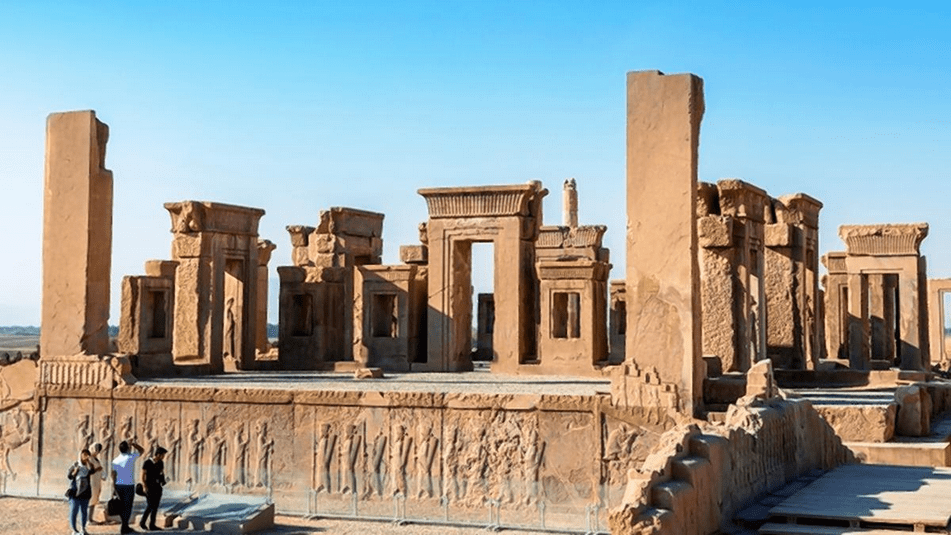A UNESCO World Heritage Site since 1979, Persepolis features colossal sculptures and intricate stone reliefs of ancient Persian kings, nobles and deities
AFP
Ruins of the stone Gates in Persepolis, the ceremonial capital of the Achaemenid Empire.
Conservationists at Persepolis, Iran’s most iconic ancient site, are waging a delicate battle against an unlikely adversary: tiny but persistent lichens eroding the millennia-old monuments.
The fight, which began years ago, is aimed at stopping the threat to the integrity of the site’s structures and its intricate carvings from lichens, organisms that grow on surfaces like stone and can slowly break them down over time.
Built in the 6th century BC by Darius I, Persepolis has withstood destruction, looting, earthquakes, fires and harsh weather.
A UNESCO World Heritage Site since 1979, Persepolis features colossal sculptures and intricate stone reliefs of ancient Persian kings, nobles and deities. But these have suffered over the years from lichen.
“This is the most serious problem, especially for carvings on stones,” said Shahram Rahbar, a conservationist at the site. “If we do nothing, these organisms could reduce these relics to dust within 50 to 100 years,” he said.
Red lichen marks are now etched into many of the ancient relics at Persepolis. The spread of lichens, which dissolve minerals and penetrate stone surfaces, is driven by industrialisation, acid rain and the harsh desert climate, said lichenologist Mohammad Sohrabi.
Iran is home to more than 3,000 species of lichens, with 500 to 700 varieties growing on historical monuments, Mr. Sohrabi said, noting that some at Persepolis were over 1,700 years old.
“Many of Persepolis’s intricate motifs have already been lost due to lichen activity,” he said.








